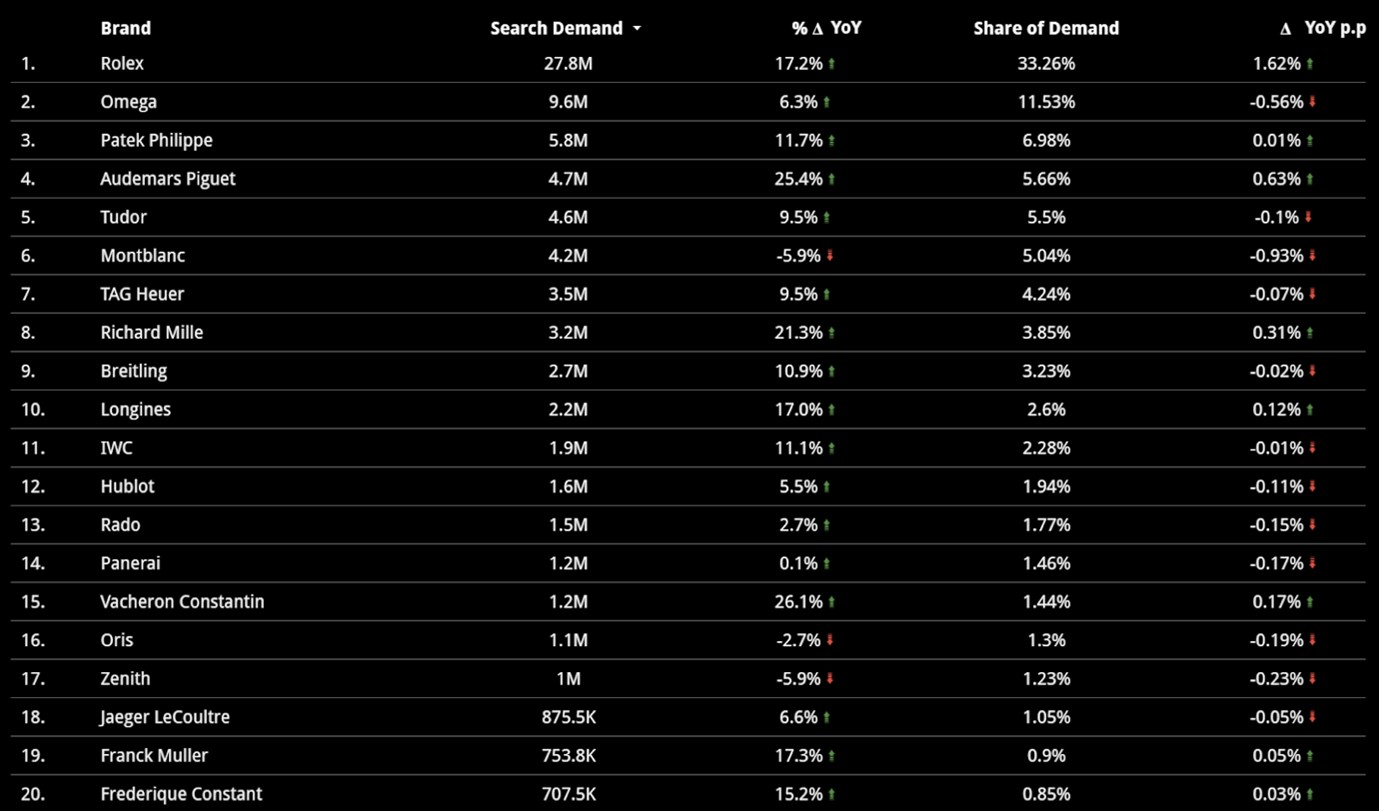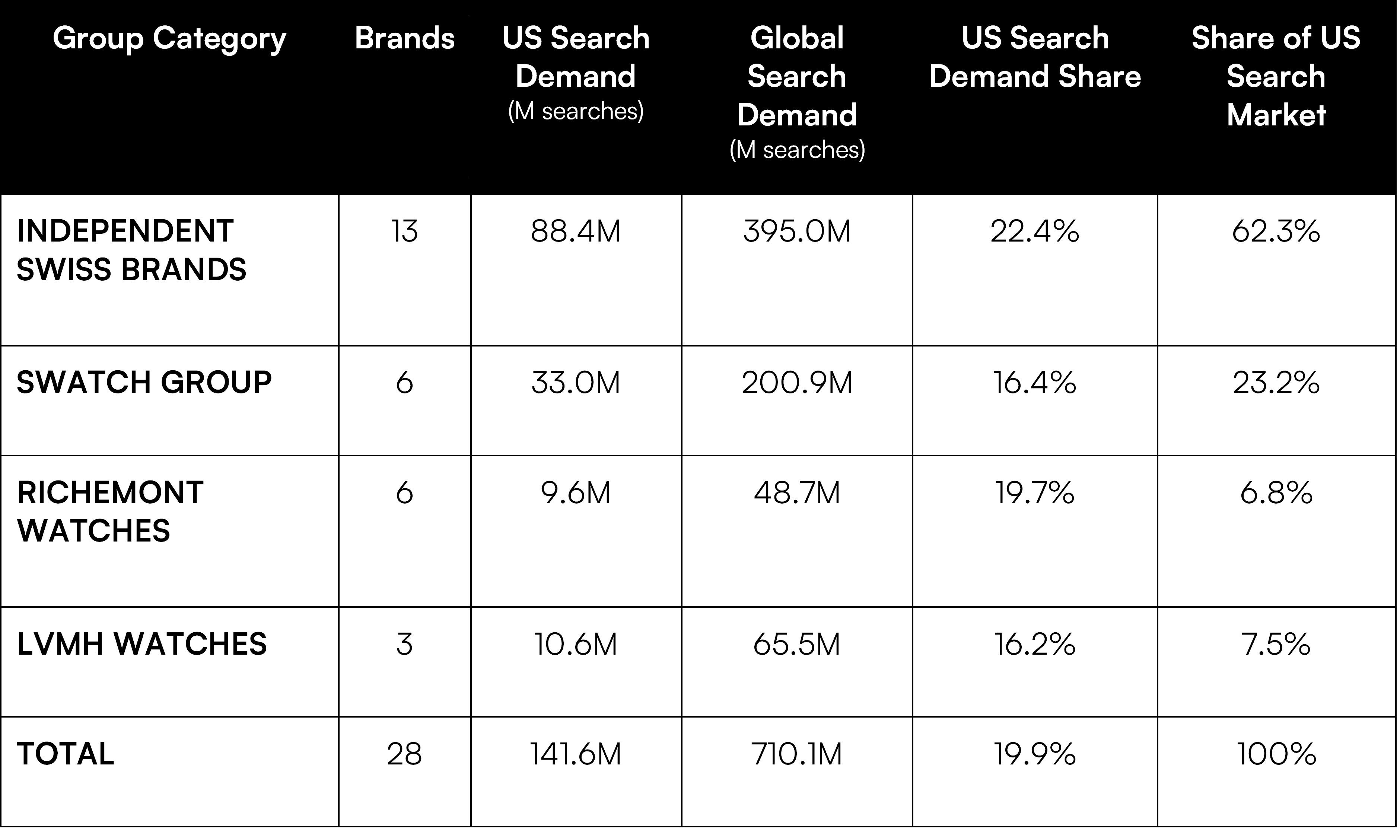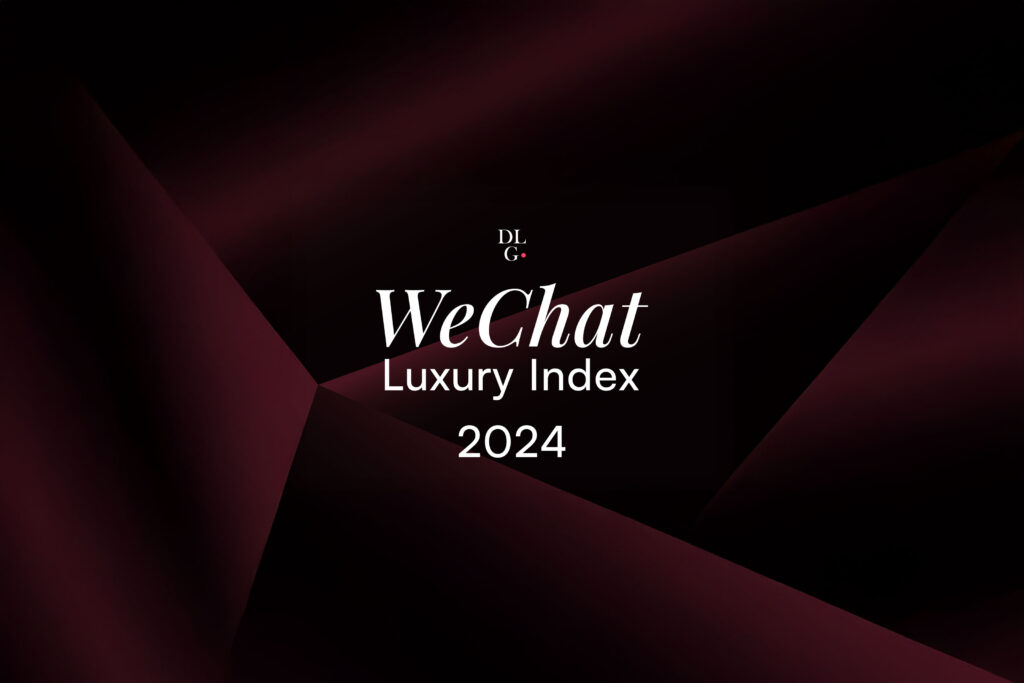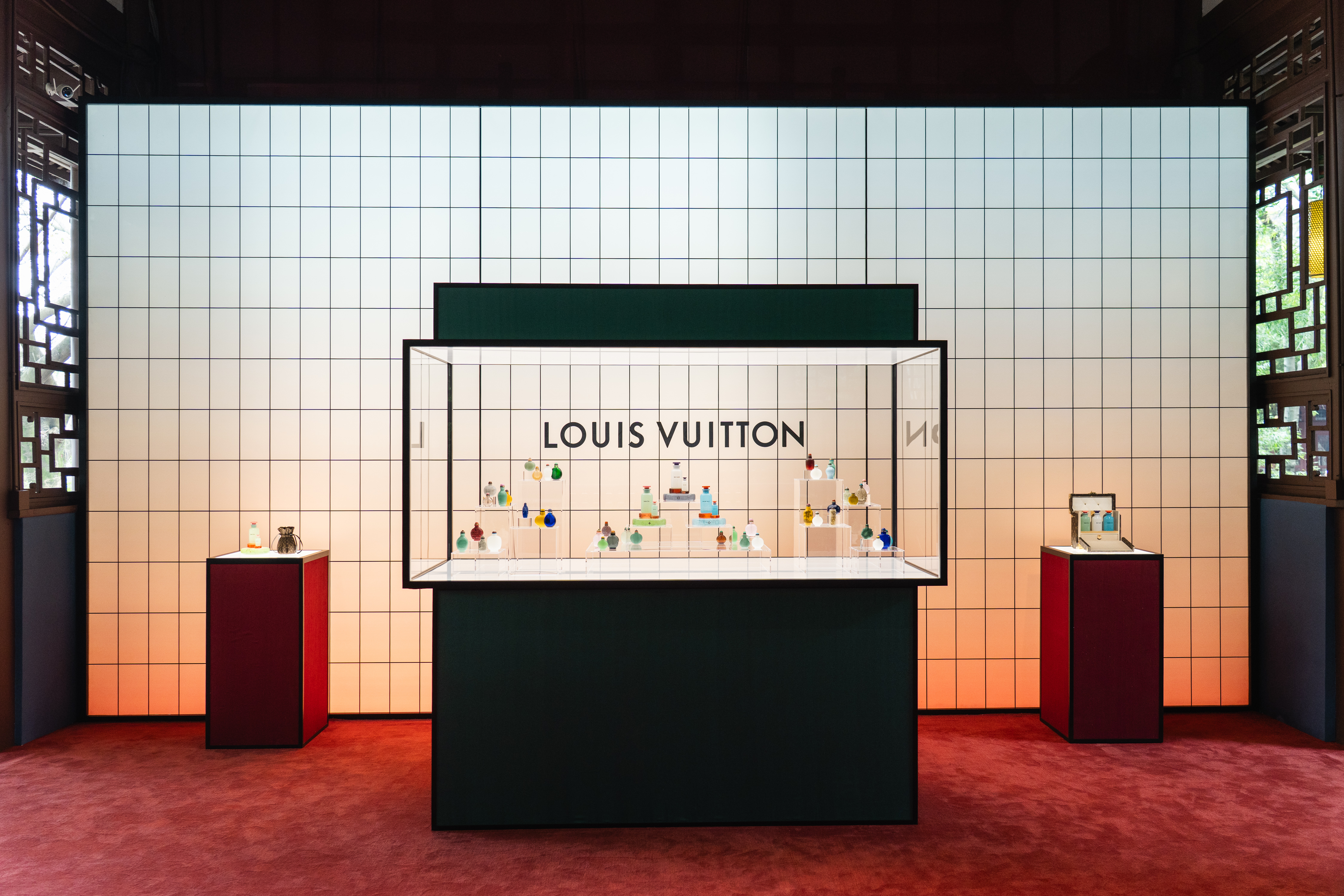DLG’s Partner & AI Innovation Director Benjamin Dubuc and Founder & CEO David Sadigh examine how proposed trade policies threaten luxury watchmakers with unprecedented US market exposure reaching 25% for leading brands
The Swiss luxury watch industry faces an unprecedented challenge as new market intelligence reveals the sector’s critical dependency on American consumers. With the United States representing nearly 20% of global Swiss watch exports and individual brands showing US market dependencies exceeding 25%, proposed tariff policies could reshape the competitive landscape of Swiss watchmaking.
Recent analysis of global search demand patterns with DLG’s proprietary DemandTracker™ tool, encompassing 1.4 billion annual searches (excluding China & Russia) across 62 luxury watch brands (excluding brands that offer both watches & jewellery as they tend to have more complex global supply chains), demonstrates that Swiss watchmakers have become increasingly reliant on the American market. This dependency has intensified significantly, with the US market share of Swiss watch exports expanding from 16.0% to 19.8% year-over-year in the first half of 2025, even as global demand contracted by 2.4%.
The American Market’s Dominance in Luxury Timepieces
The United States has emerged as the undisputed leader in Swiss watch consumption, generating CHF 4.4 billion in exports during the first half of 2025 – a figure 2.1 times larger than China, the second-largest market. This dominance extends beyond mere volume, reflecting deeper structural changes in global luxury consumption patterns.
Search demand analysis, which correlates strongly with actual export performance (R²=0.83), reveals that American consumers drove an 11.2% year-over-year increase in interest for Swiss watch brands during the first half of 2025. Certain prestigious watchmakers experienced even more dramatic growth, with Audemars Piguet and Vacheron Constantin registering 25.4% and 26.1% increases in US search demand respectively.
This exceptional performance stands in stark contrast to broader global trends, highlighting the American market’s role as a critical growth engine for the Swiss watch industry. However, this concentration of demand also creates significant vulnerability to potential trade disruptions.

Source: DLG DemandTracker™, H1 2025
Brand-Specific Exposure Reveals Significant Vulnerabilities
The analysis of search demand patterns across luxury watch brands reveals a concerning concentration of risk. Independent Swiss manufacturers demonstrate the highest average US dependency at 22.4%, followed by Richemont’s watch division at 19.7%.
At the individual brand level, exposure reaches even more pronounced levels:
The Top 3 brands with highest US market dependency:
- Rolex: 25.4% (increased by 2.2% YoY)
- Audemars Piguet: 24.8% (increased by 3.6% YoY)
- Tudor: 23.8% (increased by 1.5% YoY)
The pattern of increasing US dependency across multiple brands suggests a structural shift in luxury watch consumption, with American consumers becoming disproportionately important to brand performance. This trend amplifies potential risks from trade policy changes.

Source: DLG DemandTracker™, July 2024 – June 2025
Collection-Level Analysis Reveals Concentrated Risk
Beyond brand-level exposure, analysis of 281 luxury watch collections demonstrates that flagship and “hero” collections often exhibit even higher US dependencies than their parent brands. This concentration at the collection level amplifies potential market impacts, as these signature pieces typically drive brand prestige and profitability.
The Top 3 most exposed collections include:
- Breitling Pilot: 32.9% US dependency
- Omega Railmaster: 30.5% US dependency
- Rolex Explorer: 30.2% US dependency
These flagship collections represent significant strategic assets for their respective brands, often serving as halo products that drive overall brand perception and desire. Their disproportionate US exposure creates concentrated risk points that could significantly impact brand performance under adverse trade conditions.
Early Warning Signals & Future Outlook
“39% tariffs on Swiss exports to the USA is a bad surprise, and likely twice as high as most watch companies were expecting. We anticipate therefore another round of price increases – mid-single digits price increases should be enough to offset the extra 20% tariffs, considering that duties are applied on industrial cost, and industrial cost should be 20-30% of the recommended retail price,” says Luca Solca, Managing Director, Luxury Goods, Bernstein.
June 2025 data from the Federation of the Swiss Watch Industry showed a 17.6% year-over-year drop in U.S. exports – despite continued strength in consumer interest, as DLG’s DemandTracker™ registered 11.5% growth in search demand during the same period. This divergence suggests brands may have front-loaded shipments in anticipation of trade disruptions, highlighting proactive inventory management. “This means that they could phase their price increases over the next 3-6 months, likely while keeping their fingers crossed that a better deal could be struck with the American administration in the meantime,” adds Solca.
June 2025 data from the Federation of the Swiss Watch Industry showed a 17.6% year-over-year drop in U.S. exports – despite continued strength in consumer interest, as DLG’s DemandTracker™ registered 11.5% growth in search demand during the same period. This divergence suggests brands may have front-loaded shipments in anticipation of trade disruptions, highlighting proactive inventory management.
The strong correlation between search demand and export volumes makes this gap a critical signal of shifting sentiment and potential volatility. As U.S. dependency deepens – now accounting for nearly 20% of Swiss watch exports – the industry faces growing systemic risk.
While American consumers remain highly resilient, especially in the ultra-luxury segment, overreliance on a single market poses strategic vulnerability. The data underscores an urgent need for market diversification and more predictive intelligence.
__________________________
Download the full Swiss Watch Industry: US Market Exposure Analysis report below for detailed analyses across brands and collections. For luxury brands seeking advanced market intelligence capabilities, learn more about DemandTracker™ and how predictive search analytics can inform your strategic decisions in uncertain times.
Cover image courtesy of Rolex.
Benjamin Dubuc is Innovation Director and Partner at DLG (Digital Luxury Group), where he leads strategic analysis of luxury market trends and consumer behavior through the company’s proprietary DemandTracker™ platform.
David Sadigh is Founder and CEO of DLG (Digital Luxury Group), where he drives the company’s global vision and growth, advising leading luxury brands on digital strategy, consumer intelligence, and market performance.










